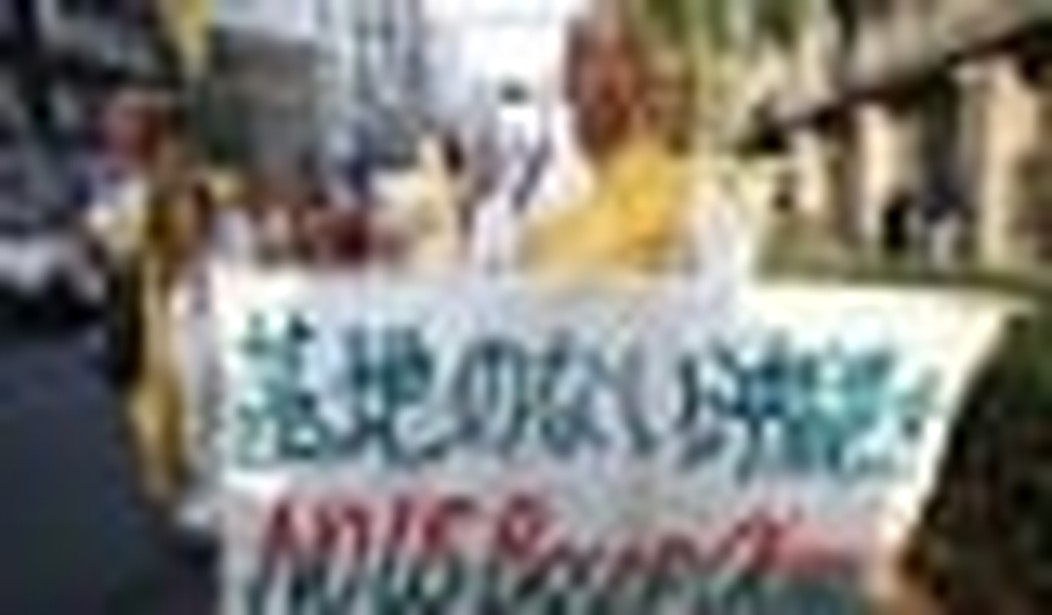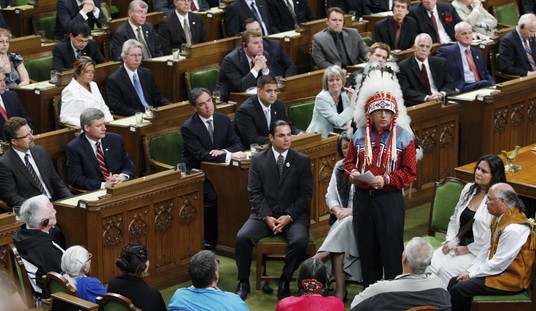The first — and most important — stopover on President Obama’s long-awaited trip to Asia has been cut in half as he delayed his departure by a day. In Tokyo, he will have just enough time to meet Prime Minister Yukio Hatoyama, drop in on the emperor and empress, and give a speech on America’s role in Asia.
In Asia, Japan is America’s “cornerstone” relationship. From Japanese ports and airfields, we base the forces that defend the South Koreans, guard the Taiwanese, and patrol contested sea lanes. Without Americans in Japan, Chinese warships and planes would soon vie for control of East Asia, from the North Pacific to the Malacca Strait.
So will we find ourselves without our crucial Japanese facilities? Today, that seems inconceivable. Americans have been basing troops there to defend Japan’s islands since the end of the Second World War. Yet the historic election of the Democratic Party of Japan (DPJ) in September — a landslide ending more than a half century of almost uninterrupted rule by the Liberal Democratic Party — has unsettled the relationship between Washington and Tokyo, and the new Japanese leader could change the alliance in ways that weaken the bond that was once thought unshakable.
Hatoyama, in short, leads a loose coalition that generally wants to look east toward China and the rest of Asia, not west toward America. On the eve of the September contest, a poll revealed that only a minority of DPJ candidates supported U.S. security objectives. Hatoyama, when he is questioning the alliance, is merely reflecting the views in his party and a Japanese electorate increasingly skeptical of their country’s ties to the United States. Although 76 percent of the public is still in favor of the military pact with Washington, support throughout society is slipping.
Support is slipping at this moment partly because the Obama administration started out by taking an uncharacteristically hardheaded approach to Japan. Hatoyama had signaled that he wanted to renegotiate a 2006 deal to realign American forces in the country. The flashpoint controversy involved the Marine Corps Air Station Futenma in Okinawa, which would have been closed and moved to a remote location on the island according to the pact.
Hatoyama, however, demanded that the facility be moved off Okinawa. His party won seats there in the September election on the platform of moving American forces away from the island, and so he has sided with the Okinawans, who feel they bear a disproportionate share of the burdens of the alliance. In fact, they are right: they host more than half the American troops, sailors, and airmen based in Japan because they are strategically placed at one of the crossroads of East Asia. Defense Secretary Robert Gates stunned the Japanese last month by snubbing their leaders and telling them he would not consider redoing the 2006 deal, which lacked support in Japan even before the Liberal Democratic Party lost power.
The spat could have gotten worse because Hatoyama’s party also pledged to end Japan’s refueling site in the Indian Ocean in support of NATO operations in Afghanistan. Yet both sides have stepped back in recent days. To his credit, the new leader in Tokyo has sought to ease tensions by pledging up to $5 billion over five years to the reconstruction of that war-torn nation. And for his part, President Obama has tried to placate the Japanese by saying this week that he would be honored to receive invitations to visit Hiroshima and Nagasaki sometime later in his presidency. The visits, which would be controversial both in the United States and Japan, would be the first for a sitting American president.
In truth, neither side wants a public rupture at this time. And how will the United States and Japan finally solve this matter? In a few days, both Obama and Hatoyama will agree to a year-long, top-to-bottom review of the alliance. By the time Mr. Obama returns to Japan next November, the alliance, which then will be a half century old, could look substantially different.
Japan, in all probability, will call the tune on the relocation of Futenma and the movement of some American forces off Okinawa. The flap has energized Japan to make changes to the relationship with the United States, seeking an “equal” role. The South Koreans also want to rebalance their treaty relationship with us, so we should not be surprised by Hatoyama’s similar theme.
Already, the Obama administration is signaling that it is open to change. “We depend on Japan as a stalwart ally on a whole host of global issues that we work on together and so I have both great affection for the Japanese people personally, but also understand the important strategic relationship that we have to continually nurture,” the president told NHK, Japan’s public broadcaster, this Tuesday. “I think that Prime Minister Hatoyama understands that the core fundamentals of this relationship are unchanged.”
The location of the Marines now based at Futenma is by no means a “core fundamental” of the alliance. The Japanese will get their way on the realignment of forces, even if they have to pay more to rebase troops. The essential point for them, however, is that the Chinese and North Koreans still threaten their nation.
Today, Japan depends as much on the U.S. alliance as it did during the Cold War, perhaps more. The Chinese are still sending their submarines surreptitiously into Japanese waters and publicly threatening to take islands under Japanese control. Beijing is stepping up its support of North Korea, which views Japan as a mortal enemy. In response, Tokyo will have to spend more on defense even as it tries to come to terms with the Chinese — and Americans will have to learn to adjust to a changing Japanese electorate.
After all, both countries have reason to accommodate the other. Together they face common adversaries on the Asian continent.









Join the conversation as a VIP Member